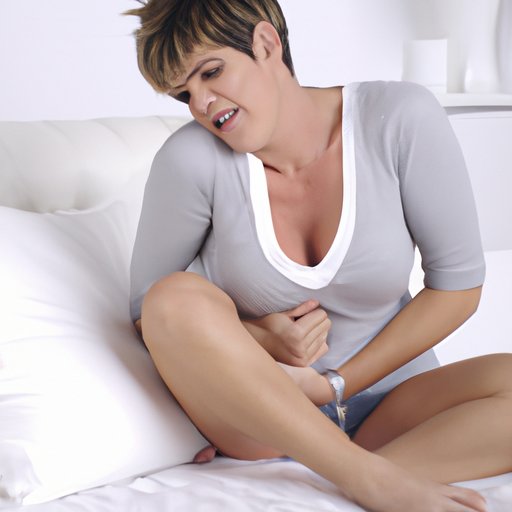
Introduction
Premenstrual cramps, commonly referred to as period pain, affect many women every month. The pain and discomfort can be frustrating and debilitating, making it difficult for women to carry out regular activities. It is crucial to discuss premenstrual cramps as it is an issue that affects many women. In this article, we will explore the causes, symptoms, natural remedies, management, and when to seek medical attention for premenstrual cramps.
Causes of Premenstrual Cramps
Premenstrual cramps occur due to hormonal changes that take place during the menstrual cycle. The two hormones involved are prostaglandins and estrogen. Prostaglandins initiate the uterine muscles’ contraction to shed the uterus lining, causing cramps. Fluctuations in estrogen levels can cause water retention and bloating, further intensifying the pain. Dehydration and stress can also trigger premenstrual cramps before the actual period cycle.
Symptoms of Premenstrual Cramps
Premenstrual cramps are usually accompanied by other symptoms such as bloating, mood swings, fatigue, tender breasts, and headaches. Most women experience mild to moderate lower abdominal pain that comes and goes before and during their periods. Some women may also experience back pain and diarrhea while others won’t experience any symptoms at all.
Natural Remedies for Premenstrual Cramps
There are various natural remedies that women can use to alleviate premenstrual cramps. One of the most effective methods is heat therapy. Applying heat to the lower abdomen area reduces muscle tension and can be done through hot water bottles, heating pads, or warm baths. Herbal teas and essential oils can also provide relief by relaxing the muscles and reducing inflammation. Chamomile and ginger tea are effective natural remedies while essential oils such as lavender and clary sage are also well known for reducing cramps.
Dealing with Premenstrual Cramps
Over-the-counter medication such as ibuprofen and aspirin can be used for temporary relief of premenstrual cramps. However, it is essential to consult a healthcare provider before taking any medication. Meditation, yoga, and light exercise are also effective methods for dealing with premenstrual cramps. These practices help relax the body, reduce stress levels, and ultimately reduce the pain intensity.
Reducing the Severity of Premenstrual Cramps
Women can reduce premenstrual cramp severity by adopting several lifestyle habits. Eating a healthy diet, rich in whole grains, fruits, vegetables, and lean proteins, can help reduce inflammation and keep the body healthy. Staying hydrated throughout the cycle is also crucial for relieving cramps. Exercise is also helpful, as it releases endorphins and increases blood flow, reducing stress and tension that can contribute to premenstrual cramps.
When to Seek Medical Attention
In some cases, premenstrual cramps can be severe and require medical attention. If the period pain is severe and prolonged, it might be a sign of underlying conditions such as endometriosis, fibroids, or pelvic inflammation. Excessive bleeding, lightheadedness, and fainting are also alarming symptoms that require medical attention. Women who experience these symptoms during their periods should seek medical care immediately.
Coping with Premenstrual Cramps at Work
Cramps can be challenging to deal with, especially while working. However, women can effectively manage their symptoms in the workplace by taking short breaks, wearing comfortable clothing, and using stress management techniques such as deep breathing and meditation. It is also helpful to keep a supply of hot water bottles, over-the-counter pain medication, and herbal teas at work.
Conclusion
Premenstrual cramps are a common issue that women face every month. However, it is crucial to understand that there are many strategies for management and relief. Women can adopt various natural remedies, healthy lifestyle habits, and use conventional medication for temporary relief. It is necessary to seek medical attention if premenstrual symptoms are severe, persist longer than usual, or followed by other alarming symptoms. Being open about discussing premenstrual cramps is essential for women’s health and wellbeing.





